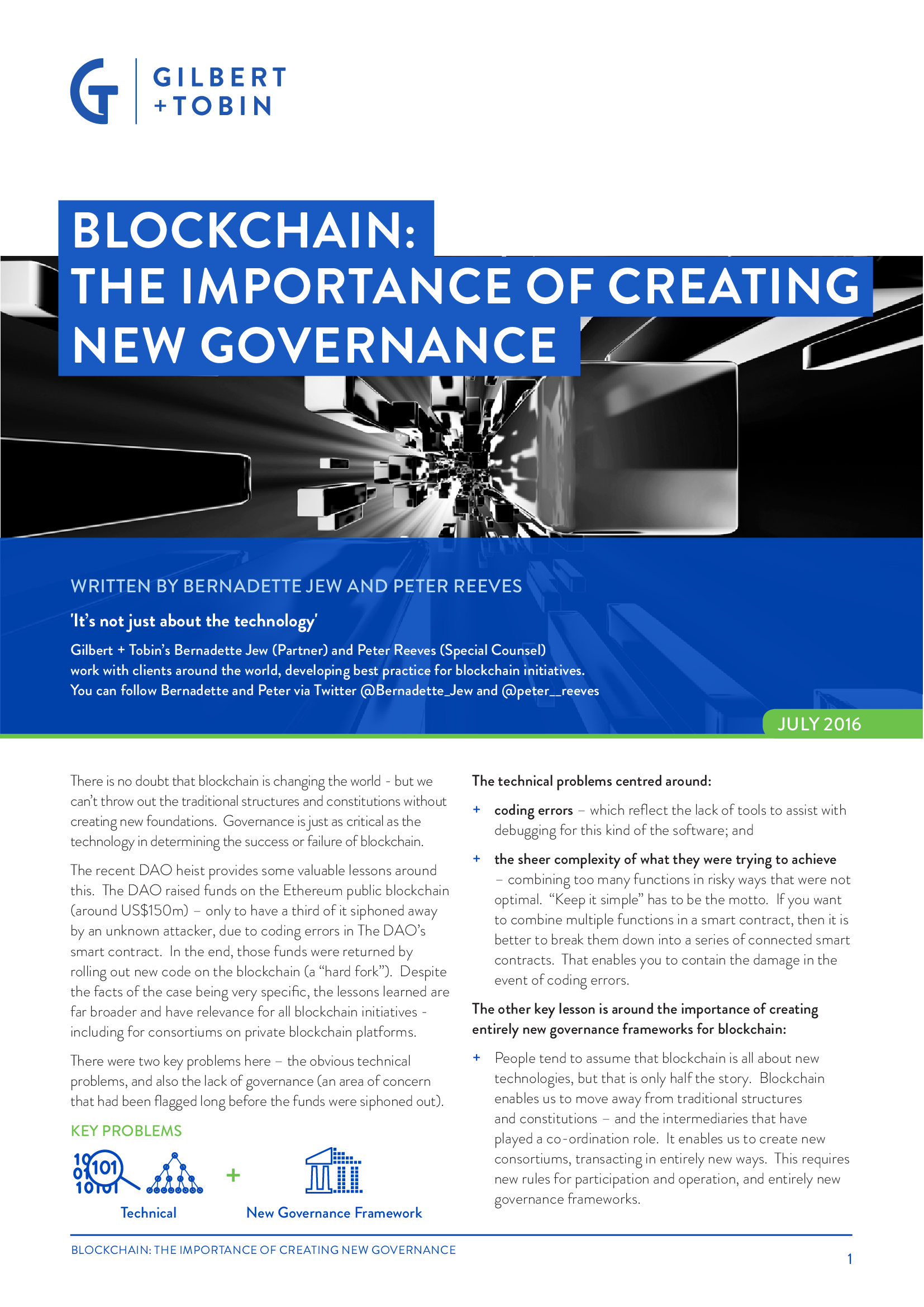There is no doubt that blockchain is changing the world - but we can’t throw out the traditional structures and constitutions without creating new foundations. Governance is just as critical as the technology in determining the success or failure of blockchain.
The recent DAO heist provides some valuable lessons around this. The DAO raised funds on the Ethereum public blockchain (around US$150m) – only to have a third of it siphoned away by an unknown attacker, due to coding errors in The DAO’s smart contract. In the end, those funds were returned by rolling out new code on the blockchain (a “hard fork”). Despite the facts of the case being very specific, the lessons learned are far broader and have relevance for all blockchain initiatives - including for consortiums on private blockchain platforms.
There were two key problems here – the obvious technical problems, and also the lack of governance (an area of concern that had been flagged long before the funds were siphoned out).
Key problems of blockchain
The technical problems centred around:
- coding errors – which reflect the lack of tools to assist with debugging for this kind of the software; and
- the sheer complexity of what they were trying to achieve – combining too many functions in risky ways that were not optimal. “Keep it simple” has to be the motto. If you want to combine multiple functions in a smart contract, then it is better to break them down into a series of connected smart contracts.
That enables you to contain the damage in the event of coding errors. The other key lesson is around the importance of creating entirely new governance frameworks for blockchain:
- People tend to assume that blockchain is all about new technologies, but that is only half the story. Blockchain enables us to move away from traditional structures and constitutions – and the intermediaries that have played a co-ordination role. It enables us to create new consortiums, transacting in entirely new ways. This requires new rules for participation and operation, and entirely new governance frameworks.
- To create new kinds of governance for blockchain, we need absolute clarity around the detailed transaction processes, new operational rules, new drivers around decision-making between participants, and new procedures for ensuring stability:
- reflecting the new processes for consensus and validation;
- balancing the transparency of blockchain against the need for confidentiality – not as easy as it sounds;
- managing ongoing decision-making between the participants – taking into account new kinds of “control” and “influence” in the blockchain environment;
- balancing the conflicts between regulation and decentralisation; and
- ensuring long term stability and resilience – for both the platform and the consortium.
- There isn’t a “one size fits all” approach, there are many options out there – it all depends on the use case and the technology deployed. Different blockchain technologies offer vastly different capabilities and levels of flexibility – including around consensus and configurations.
Many blockchain projects have been driven by goals around being first to market on the technology front. However, the DAO case provides us with a timely warning around the importance of investing time and effort in creating new governance frameworks - without it, chaos will reign.

Visit Smart Counsel

